“You just find yourself more and more.”
Warning: This piece contains discussions of mortality.
That tooth is perfect.
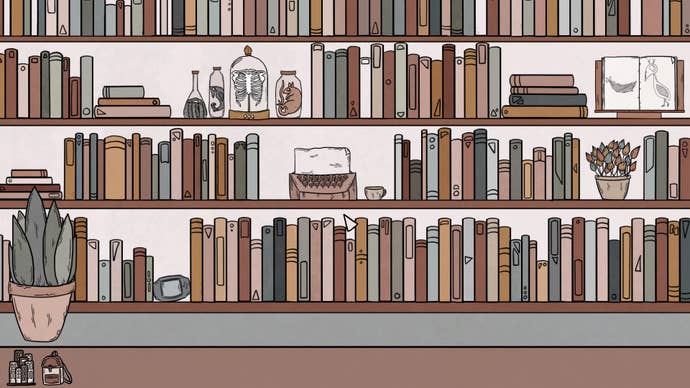
This is not the cheery childhood mouthful of sparklers you draw with a few idle strokes of the pen.
It’s the tooth extracted.
The whole horrible truth of it.

What could be more familiar?
But with those roots, those prongs, what could be more inhuman, more uncanny?
Where do you find the bones?
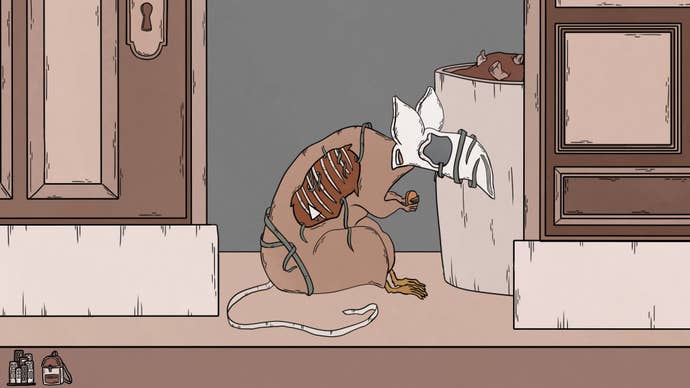
You go to different buildings - shops and libraries and apartments - and meet the creatures who live there.
You get to know the creatures by examining their things, their personal effects.
You solve puzzles, too, ranging from physics challenges to more abstract stuff.
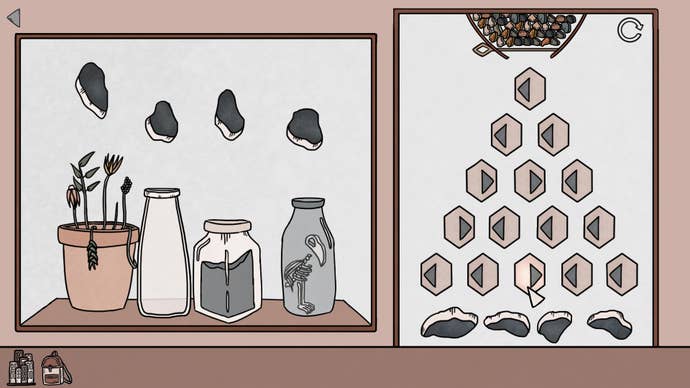
How to get an eyeball out of a gumball machine?
What do these fragments of pottery make when put back together?
Oh yes: and the game doesn’t explain itself.
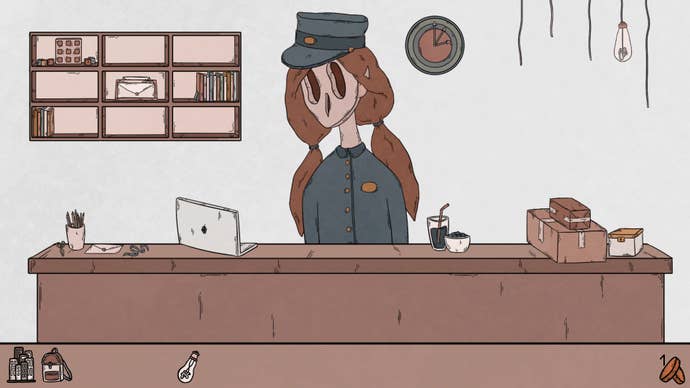
You poke at it, and all but hold it up to your ear for a brisk rattle.
You give it all your senses.
What does it want?
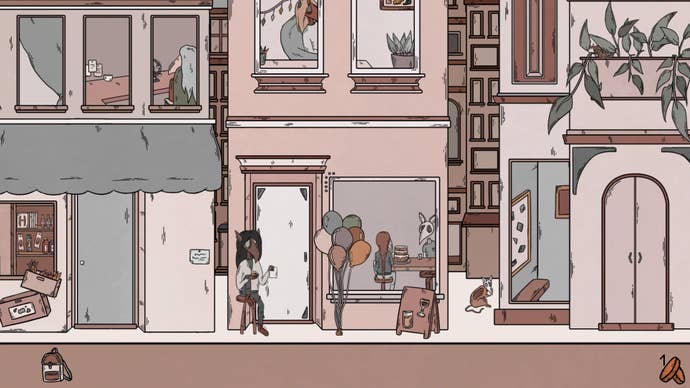
But I want to know: what about the extracted tooth?
What about the dead leaves, fish skin, jar lids and handfuls of rattling pebbles?
When I play Karrh’s games I feel an unusual need to really make sense of certain things.
Mostly, I need to draw a line around the stuff she puts in her games.
It all seems of a piece, but how can it be, when it’s also so diffuse?
Bird’s feathers and bits of egg, tarnished coins, rubber bands and gravel.
I wanted to ask Karrh, when we spoke, about how she chooses this stuff for her games.
A mother had photographed everything she had found each day in her young child’s pockets.
Feathers, pebbles, plastic monsters, rubber bands.
No teeth, thankfully, but you get the point.
“A child who was a big pebble eater.”
She drifts off for a millisecond, or seems to, perhaps conjuring the pebble eater from the past.
“Yes, absolutely,” she says.
“And I think the point about children?
Children find so much joy in the things that adults view as mundane.
So, like, rocks are not interesting to most humans.
“But,” she continues, “I hope to hold on to that joy.
To engage with life for much longer.
And I think being around children does that.
Just working at the preschool, kids are very funny, and they just see things.
Things are so new to them.”
Somewhere, I suspect, Karrh is creating a grammar.
She is creating a means of expression, and one that has absolutely nothing to do with words.
Back in a previous game, the glorious Landlord of the Woods, we got a bit more.
A line or two at the beginning to cue us into a tale of melancholia, at least.
Is there a purposeful retreat going on?
“I want to be trying to move further away from dialogue,” Karrh says.
And the grammar that’s building in her games?
“Yeah,” she considers the point.
But I agree wholeheartedly.
So a lot of it comes from other people’s observations, because a lot of it is subconscious.
“Of course, I have like script names for, like, draggable items, or whatever.
But yeah, a lot of bones.
We have a Field Museum here in Chicago that’s just full of dead, dead animals.
And that is very inspiring.
A lot of it is subconscious, though.
And I also like the idea of not telling a story, but exploring an idea.
The things that I make, there’s no grandiose moment that happens.
“I don’t know what it’s called either,” she says.
“I wish I had a more definitive answer.
I wish I was more cognizant of the creative decisions that I make that are good.
or that I could replicate at a certain point.
Even the characters are all very different.
I think it really just comes from the past three years making stuff.
You just find yourself more and more.”
“I think at the beginning, it has to be much more exploratory,” she tells me.
“I never had that feeling of like, Oh, this feels really good.
I think there’s two separate feelings.
There’s the feeling of making the thing that just feels really good.
And then the feeling of observing the things you’ve made and re-evaluating.”
This process of re-evaluating is crucial too.
“Recently, I’ve been working on the ending for Birth more.
And so I haven’t played through the beginning part.
Are they an act of discovery for the designer as much as the player?
I feel this particularly when it comes to the puzzles in Karrh’s games, incidentally.
“Yes,” she says.
“For the most part, I am not cognizant, even when I first started working on Birth.
And eventually it came out.
So that feeling of loneliness came through just naturally.
And I was like, Oh, that is what I want to focus on.
Just to say what you want to say.”
That sounds a bit like one of the puzzles in the game itself?
“Yes,” she laughs.
That’s a lovely correlation for sure.”
I can’t stop thinking about that tooth.
At the end of our conversation, I ask Karrh about the body that the player builds in Birth.
More specifically I ask about how one should feel about it.
“The gap,” she says.
“The gap between, yeah, what you were making and what you know that it will be.
You know what parts you’re collecting.
And you know, what, likely, it will end up being.
I think that, you’re definitely supposed to feel unsettled.
I think just in general, the concept of death, having a loved one pass?
And I think it’s just more dense in Birth, probably.”
And it’s clearly a fixation in Birth that after death we become an object?
A game like Birth sends me off in so many different directions, and none of them feel comprehensive.
“Yeah,” says Karrh.
And I think probably it does seem unsolvable because, to me, it’s not solvable.
So it’s not like I’m making something with the answer.
I’m saying, “Hey, I’m dealing with this.
What about you guys?”
It’s that versus, “Here’s an answer.”
Birth is released on PC on 17th February.